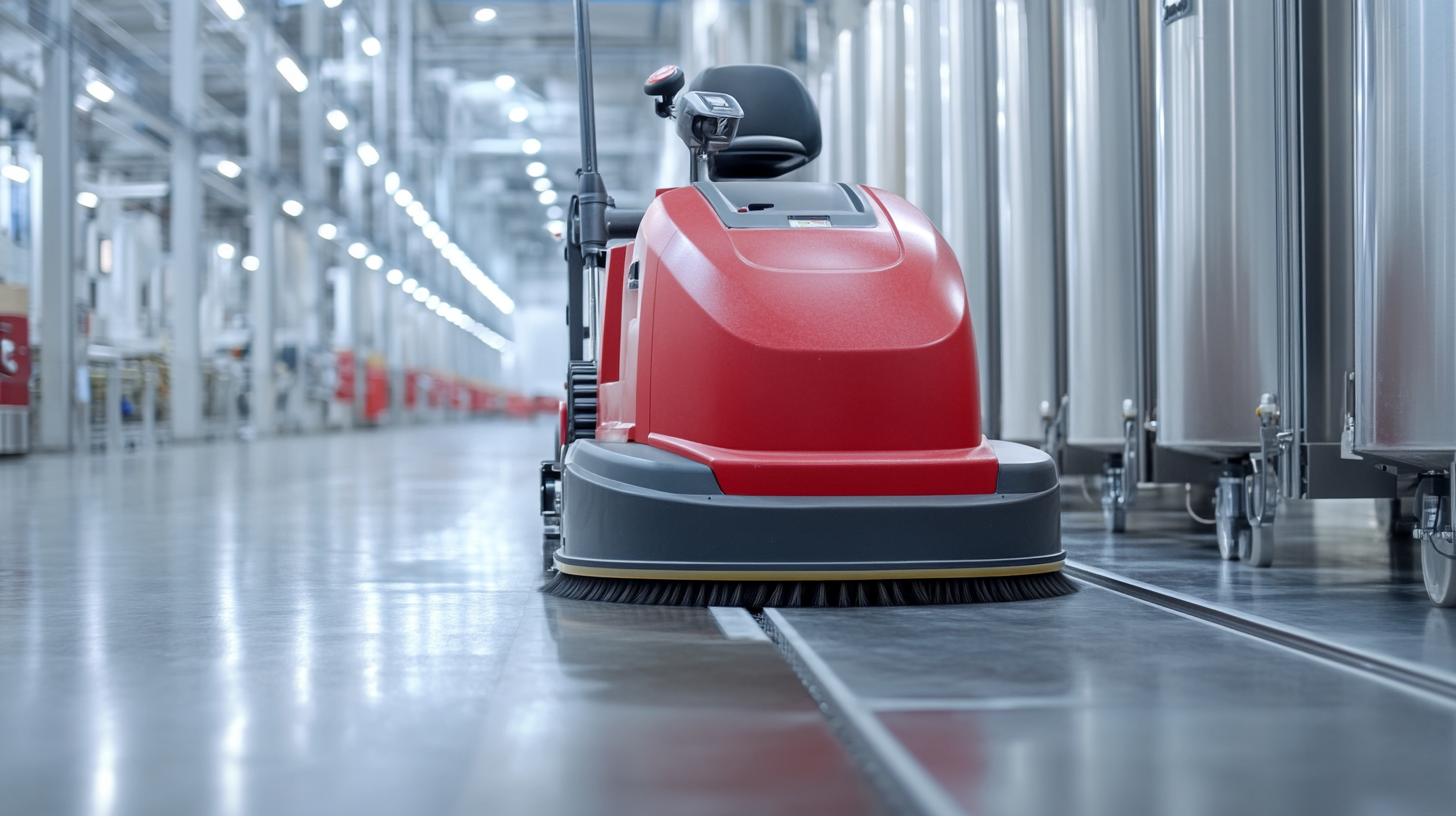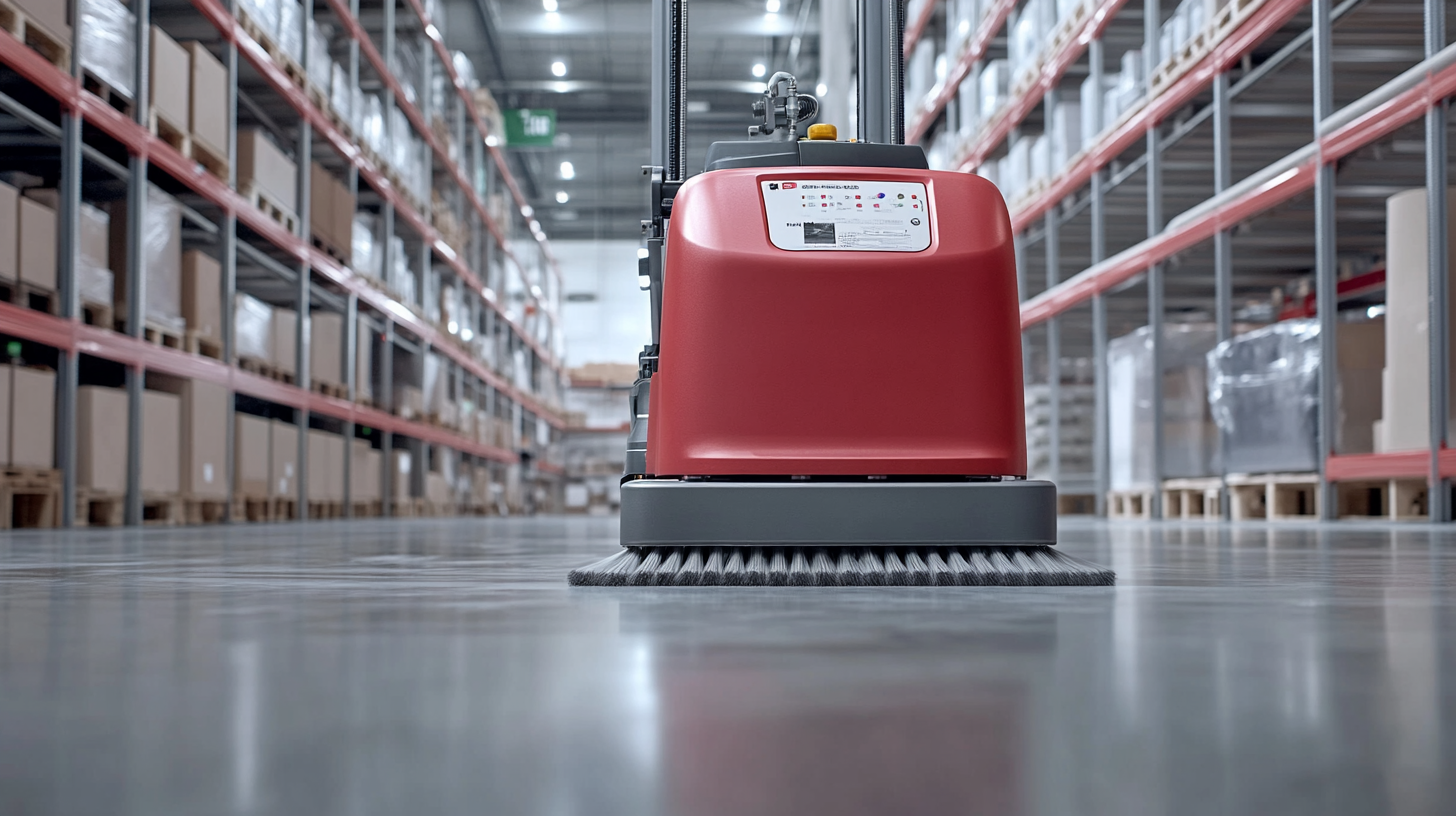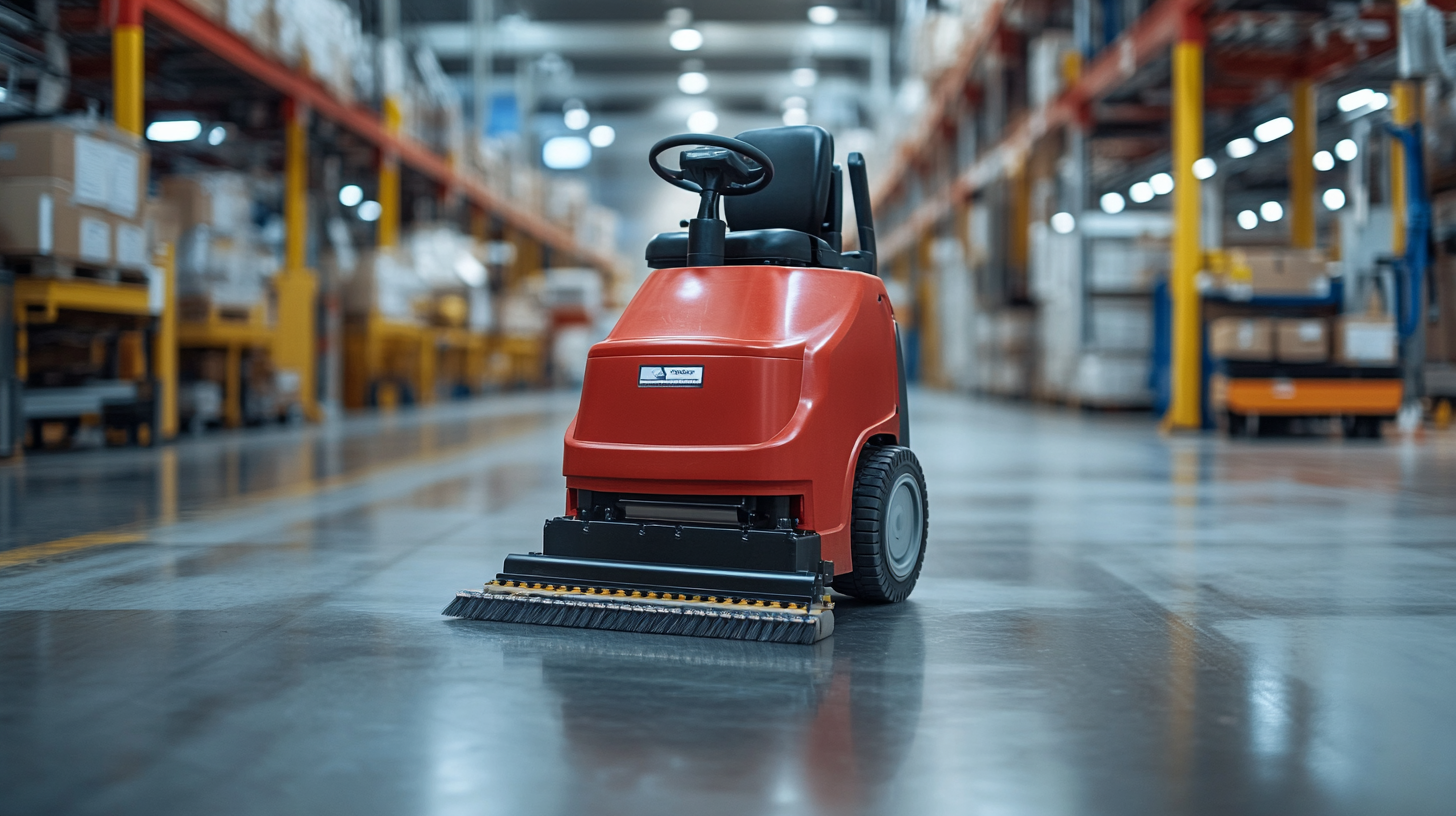Leave Your Message
In today’s fast-paced industrial environment, maintaining cleanliness and hygiene on the factory floor has never been more critical. The advent of advanced technology has brought about impressive innovations in the design and functionality of the Industrial Floor Scrubber Machine. These machines are not merely tools for cleaning; they are essential assets that contribute significantly to operational efficiency, safety, and the overall productivity of businesses. As industries evolve, so do the challenges, and the latest industrial floor scrubbers are equipped with features that address these challenges head-on, ensuring that facilities remain pristine without disrupting workflows.
The latest innovations in Industrial Floor Scrubber Machines offer not only improved cleaning capabilities but also enhanced user experience and sustainability. By incorporating smart technologies, such as IoT connectivity and automation, these machines streamline the cleaning process, reduce labor costs, and minimize environmental impact. As we explore the latest advancements in this arena, it becomes clear that investing in a state-of-the-art industrial floor scrubber is a strategic decision that can unlock unparalleled levels of efficiency and cleanliness in any industrial setting. Join us as we delve deeper into the transformative features and benefits of these cutting-edge cleaning machines.

The evolution of industrial floor scrubber technologies has significantly transformed the way businesses maintain cleanliness in large spaces, enhancing both efficiency and effectiveness. Historically, floor cleaning relied heavily on manual labor, but innovations in scrubber machines have increasingly automated and streamlined this process. According to a recent report by the CleanShow, the market for industrial floor scrubbers is projected to reach $2.91 billion by 2026, illustrating a robust growth trajectory fueled by technological advancements. Modern industrial floor scrubbers now feature intelligent automation, integrated sensors, and IoT connectivity. These innovations not only allow for improved cleaning performance but also facilitate predictive maintenance, reducing downtime. A study by the U.S. Bureau of Labor Statistics reported that in environments equipped with advanced cleaning machines, janitorial productivity increased by approximately 25%, allowing staff to focus on higher-value tasks rather than manual scrubbing. Furthermore, energy efficiency has become a focal point in the evolution of these machines. Newer models utilize eco-friendly battery technologies and smart energy management systems that can significantly lower operational costs. A report from the Environmental Protection Agency highlighted that using efficient cleaning technologies can reduce energy consumption by nearly 40% compared to older equipment, enabling businesses to adopt greener practices while also benefiting their bottom line. As we move forward, the continuous innovation in industrial floor scrubber machines promises to redefine productivity and sustainability in facility management.

Modern floor scrubber machines have evolved significantly, leveraging cutting-edge technology to enhance efficiency in industrial cleaning. The latest innovations incorporate advanced features that improve performance and usability. One of the key advancements is the integration of smart technology, such as IoT (Internet of Things) capabilities. This allows operators to monitor machine performance remotely, schedule cleaning tasks, and receive maintenance alerts, optimizing workflow management.
Additionally, modern floor scrubbers are designed with ergonomic considerations in mind. Features such as adjustable handle heights and intuitive control systems enable operators to work comfortably, reducing physical strain and increasing productivity. Battery life has also seen improvements, with many machines now employing lithium-ion technology that offers longer run times and faster charging, making them more suitable for large spaces and extended operations.
Moreover, several studies underline the increased efficiency brought about by these innovations. According to a recent report, upgrading to advanced floor cleaning equipment can lead to a reduction in labor costs by up to 30%, allowing companies to allocate resources more effectively. Environmental considerations are also at play, as many modern machines utilize eco-friendly cleaning solutions and energy-efficient operations, contributing to sustainability goals while ensuring high cleaning standards. These advancements represent a significant leap forward in the industrial cleaning sector, highlighting the importance of staying updated with the latest technologies.

In today’s fast-paced industrial environments, maintaining cleanliness is not just a matter of appearance but also a necessity for safety and efficiency. Automated scrubbing systems have emerged as vital tools that enhance cleanliness while reducing labor costs and time. The integration of advanced technologies in these machines means that businesses can achieve superior cleaning results with minimal manual intervention.
One of the key benefits of automated scrubbing systems is their consistency. Traditional cleaning methods often rely on human operators, which can lead to variations in cleaning quality based on the individual's performance. In contrast, automated systems maintain a high level of reliability, ensuring that floors are cleaned uniformly and thoroughly every time. This consistency not only improves the overall hygiene of the workspace but also reduces the risk of accidents caused by dirt and debris on the floor.
Moreover, these innovative floor scrubbers feature intelligent navigation and real-time monitoring capabilities. Using sensors and artificial intelligence, they can effectively map out cleaning routes, avoid obstacles, and adapt to different floor surfaces. This not only maximizes cleaning efficiency but also significantly minimizes the time spent on maintenance tasks. Ultimately, investing in automated scrubbing systems allows industries to reclaim valuable time and resources while fostering a cleaner and safer working environment.

When it comes to maintaining cleanliness in industrial settings, the methods employed can significantly affect both efficiency and effectiveness. Traditional floor scrubbing methods often involve manual labor and basic equipment, which, while reliable, can be labor-intensive and time-consuming. These conventional approaches typically require team members to spend hours on their hands and knees with mops or utilize bulky scrubbers that lack the precision and advanced features found in modern machines. This not only increases workforce fatigue but also limits productivity, as workers are occupied with cleaning instead of focusing on more strategic tasks.
In contrast, the latest innovations in industrial floor scrubber machines have revolutionized the way facilities approach cleanliness. Advanced models integrate smart technology that allows for real-time monitoring, automated scrubbing patterns, and water-saving features, leading to thorough cleaning with minimal effort. These machines often utilize scrub brushes that adapt to different floor types, ensuring no dirt is left behind while optimizing water and solution use. Moreover, with enhanced battery life and quick charging capabilities, businesses can enjoy continuous operation without the downtime associated with traditional scrubbing methods.
The comparative analysis of these approaches reveals that investing in innovative floor scrubbers can yield substantial long-term benefits. While the upfront cost may be higher, the operational efficiencies gained through reduced labor hours and improved cleaning outcomes often lead to significant savings. As industries continue to prioritize sustainability and operational excellence, transitioning from traditional to innovative scrubbing methods not only meets cleanliness standards but also supports overall business goals.
As the floor cleaning equipment market evolves, significant innovations are poised to shape its future. Valued at approximately USD 12.86 billion in 2023, the market is projected to experience robust growth at a compound annual growth rate (CAGR) of 8.5% from 2024 to 2030. This surge is driven by advancements in technology and a growing demand for efficient, sustainable cleaning solutions across various industries.
One of the key trends emerging in 2025 is the integration of smart technologies in industrial floor scrubber machines. These innovations promise enhanced operational efficiency, allowing users to optimize cleaning processes with real-time data and analytics. Cleaning equipment manufacturers are increasingly focusing on designing machines that not only improve performance but are also environmentally friendly, aligning with the broader trend toward sustainability in industrial operations.
In addition to technological advancements, the increasing emphasis on hygiene and cleanliness, especially post-pandemic, is fueling the demand for advanced floor cleaning equipment. The global cleaning services market is also on a growth trajectory, expected to rise from USD 451.63 billion in 2025 to USD 734.17 billion by 2032, reflecting a CAGR of 7.19%. This interconnected growth of the cleaning services and equipment markets underscores the necessity for continuous innovation to meet evolving industry standards and consumer expectations.
